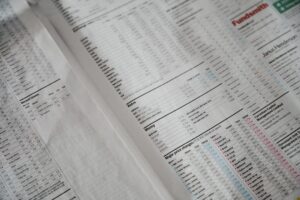Understanding the Importance of Drawdown in Forex Risk Management
Forex trading involves a certain level of risk, and one of the key factors that traders need to consider is drawdown. Drawdown is a measure of the decline in capital from its peak value to its lowest point. It is an essential concept in risk management, as it helps traders assess the potential losses they may incur during their trading activities.
In the forex market, drawdown is typically expressed as a percentage. For example, if a trader’s account balance reaches $10,000 and then drops to $8,000, the drawdown is calculated as (10,000-8,000)/10,000 = 20%. This means that the trader experienced a 20% drawdown from the peak account balance.
Understanding drawdown is crucial because it provides insights into the potential risk involved in a trading strategy. By knowing the maximum drawdown that a strategy has historically experienced, traders can assess whether they are comfortable with the potential losses they may face. This knowledge allows traders to set realistic expectations and manage their risk accordingly.
One of the key benefits of understanding drawdown is the ability to determine the appropriate position sizing for trades. Position sizing refers to the number of lots or units a trader should trade based on the size of their trading account. By considering the drawdown of a trading strategy, traders can ensure that they allocate an appropriate portion of their capital to each trade.
For example, if a trader has a maximum drawdown of 30% on their account, it would be prudent to limit their position size to a level that would allow them to withstand a potential 30% drawdown. By doing so, traders can protect themselves from significant losses and maintain a healthy trading account.
Furthermore, understanding drawdown helps traders evaluate the risk-reward ratio of a trading strategy. The risk-reward ratio compares the potential profit of a trade to the potential loss. By considering the historical drawdown of a strategy, traders can assess whether the potential reward justifies the potential risk.
For instance, if a trading strategy has a historical drawdown of 40% and a potential profit of 20%, the risk-reward ratio is unfavorable. In this case, the potential losses outweigh the potential gains, and it may be wise to reconsider implementing such a strategy. On the other hand, if a strategy has a historical drawdown of 20% and a potential profit of 40%, the risk-reward ratio is favorable, and the strategy may be worth pursuing.
Another aspect of drawdown that traders should consider is the recovery period. The recovery period refers to the time it takes for an account to recover from a drawdown and return to its peak value. Traders should be aware of the recovery period of their trading strategies because it affects their ability to generate consistent profits.
If a strategy has a long recovery period, it means that it may take a significant amount of time to recoup losses and reach new profit levels. This can be detrimental to a trader’s confidence and overall trading performance. Therefore, it is crucial to assess the recovery period of a strategy and determine whether it aligns with one’s trading goals and expectations.
In conclusion, drawdown plays a vital role in forex risk management. By understanding drawdown, traders can assess the potential losses they may incur, determine appropriate position sizing, evaluate risk-reward ratios, and assess the recovery period of their trading strategies. This knowledge allows traders to make informed decisions, manage their risk effectively, and increase their chances of long-term success in the forex market.






